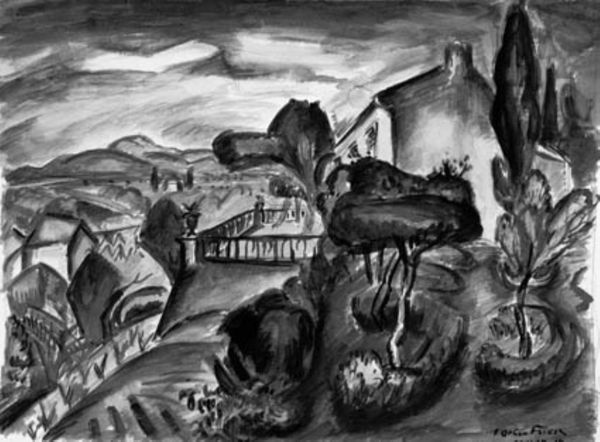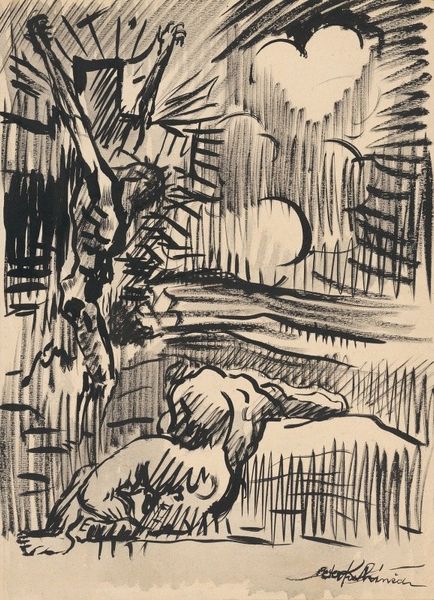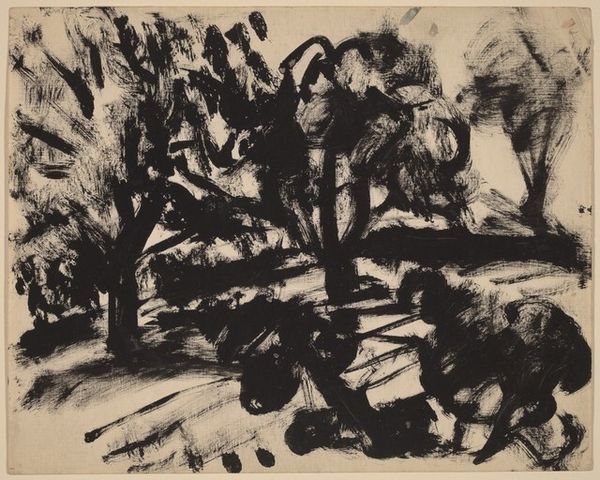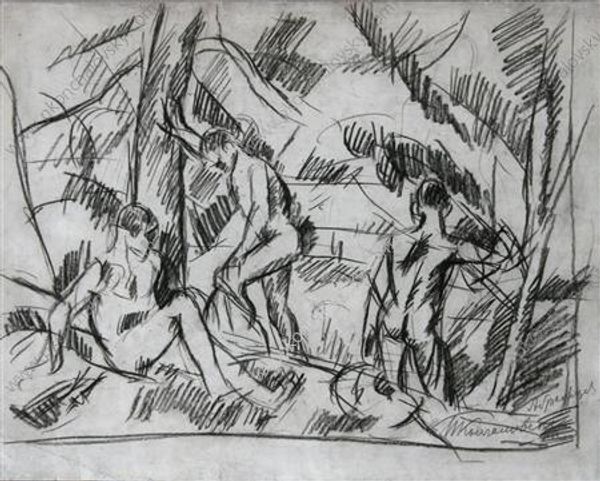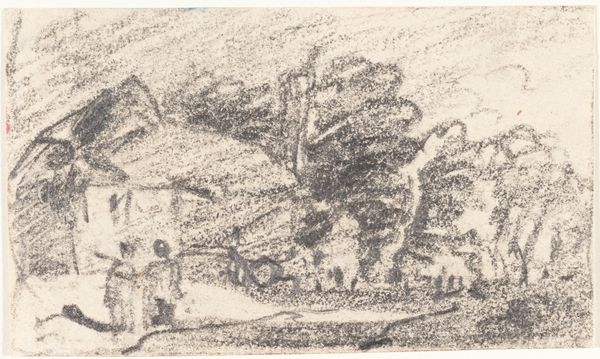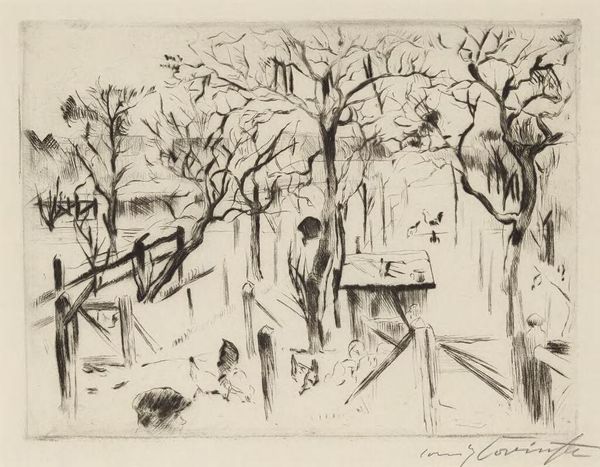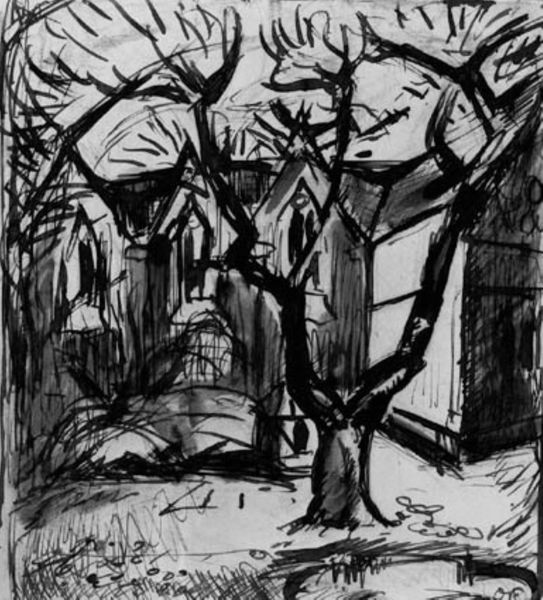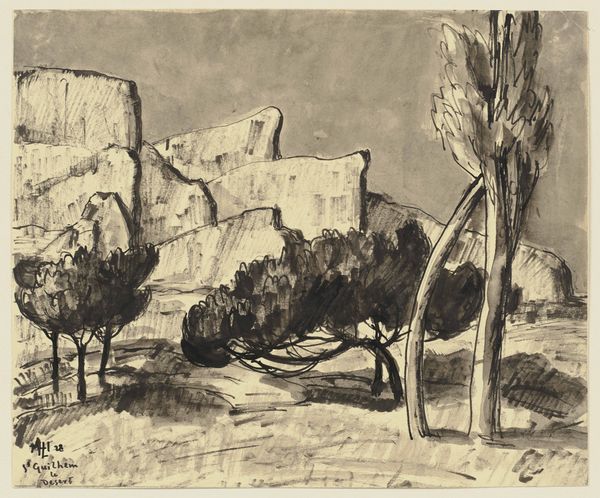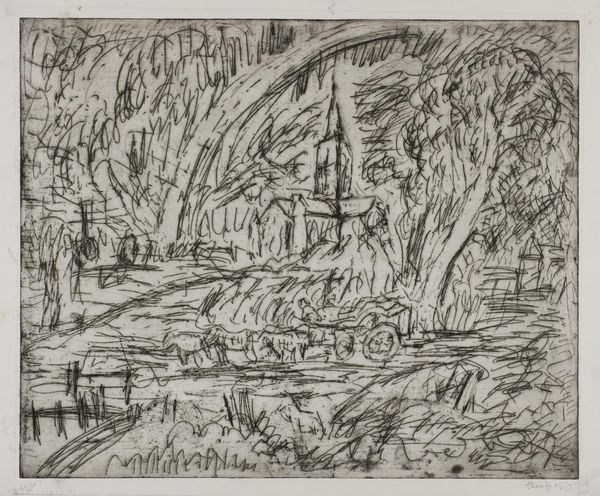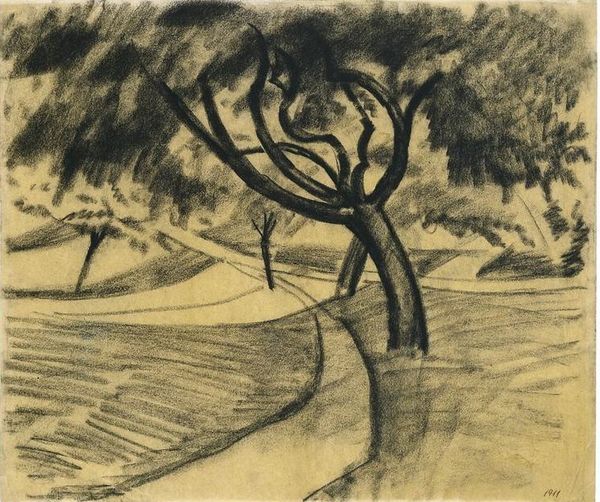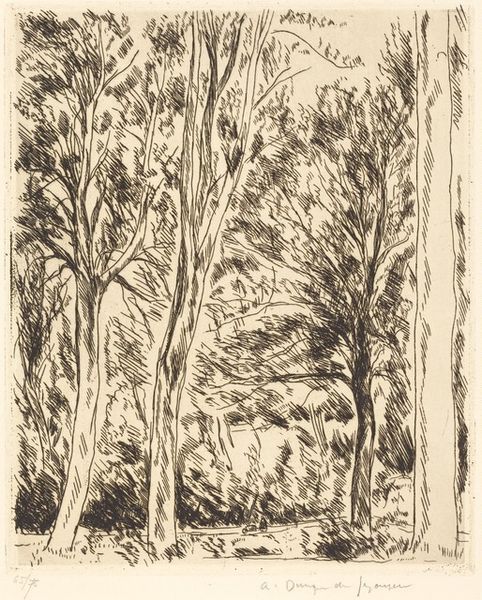
painting, oil-paint
#
painting
#
oil-paint
#
landscape
#
expressionism
Dimensions: 65 cm (height) x 81 cm (width) (Netto)
Curator: Welcome. We are looking at “Under the Fig”, painted by Othon Friesz in 1922. This oil on canvas is a landscape, currently held at the SMK, the National Gallery of Denmark. What are your first thoughts? Editor: There’s an unsettling intensity. It looks more like the artist's mindscape than a landscape. You feel the weight of the thick pigment he has manipulated and scraped across the canvas. How else do you see it? Curator: Well, consider the formal devices. Friesz is definitely exploring planes and forms, typical for an expressionist, to translate emotional experience. The twisted fig tree dominates, doesn’t it, almost suffocating the composition? See how it uses contrasting tonalities? Editor: The brushwork alone conveys something important about labor; there is visible physical engagement, a building-up and a breaking-down. It reminds us the artist toiled, physically engaging in the means of creating. It is rough, isn’t it, not pristine and removed. It begs the question—how do such heavy materials reveal social context and effort in representing this seemingly natural setting? Curator: Perhaps through a subjective filter; he breaks from purely mimetic representation, so we’re drawn to the internal and formal aspects of the scene more. This approach seems intentional. What impact does the light and dark tonality and almost aggressive brushstroke choices have on our reading? It is far from neutral. Editor: Those marks become material themselves! They shift from just “depicting” foliage to manifesting his exertion with tools and pigment. Does the roughness mimic the manual labor often excluded from the idyllic views such scenes conjure, contrasting bourgeois comfort with labor? Curator: An interesting consideration! The expressionistic aesthetic heightens the dramatic qualities while reflecting emotional or psychological responses rather than documenting objective facts. So in this image of this simple location, he does seem to want to create a certain expression for the viewer, who comes face to face with the emotional reality of landscape experience. Editor: Examining the materiality lets me look beyond subject to question social position and art-making process. It leaves me thinking how manual engagement shapes even “natural” scenes. Curator: While analyzing this scene under those terms you allow the aesthetic, as an articulation of its formal characteristics to convey what may have never been recorded. So thank you for sharing that lens through which to consider the composition!
Comments
No comments
Be the first to comment and join the conversation on the ultimate creative platform.

